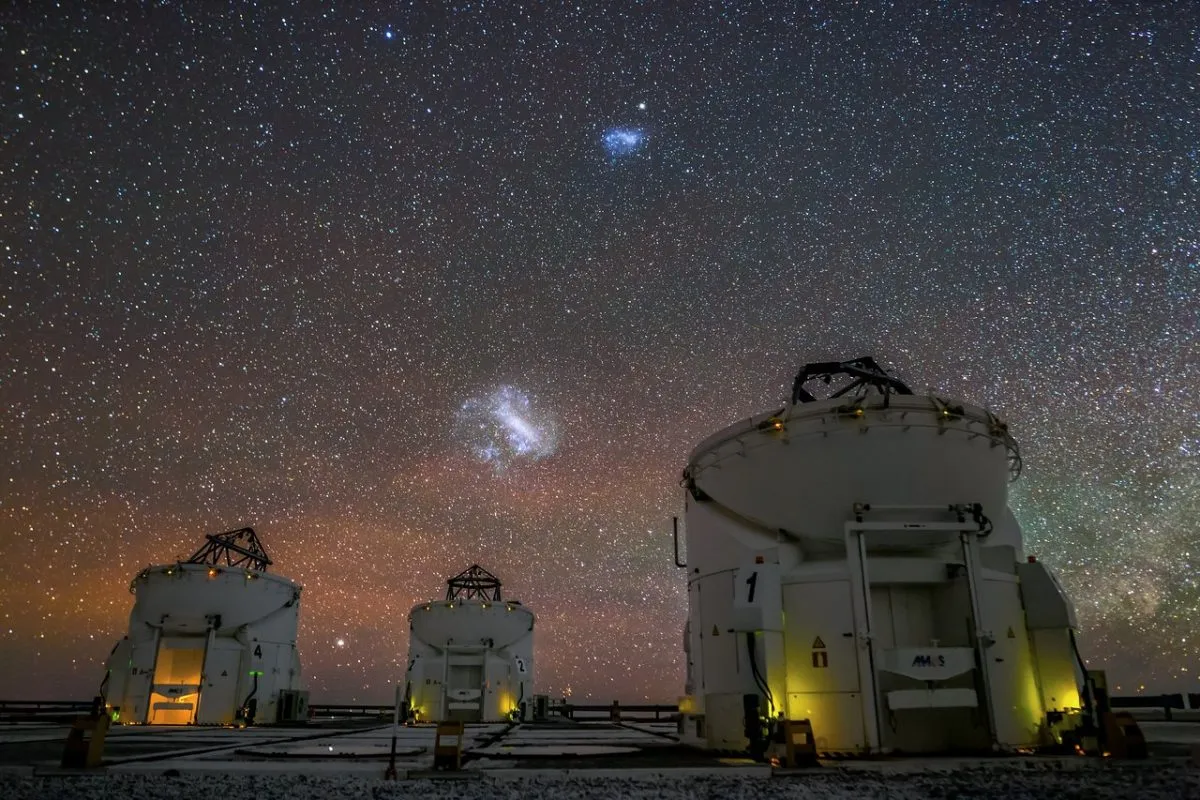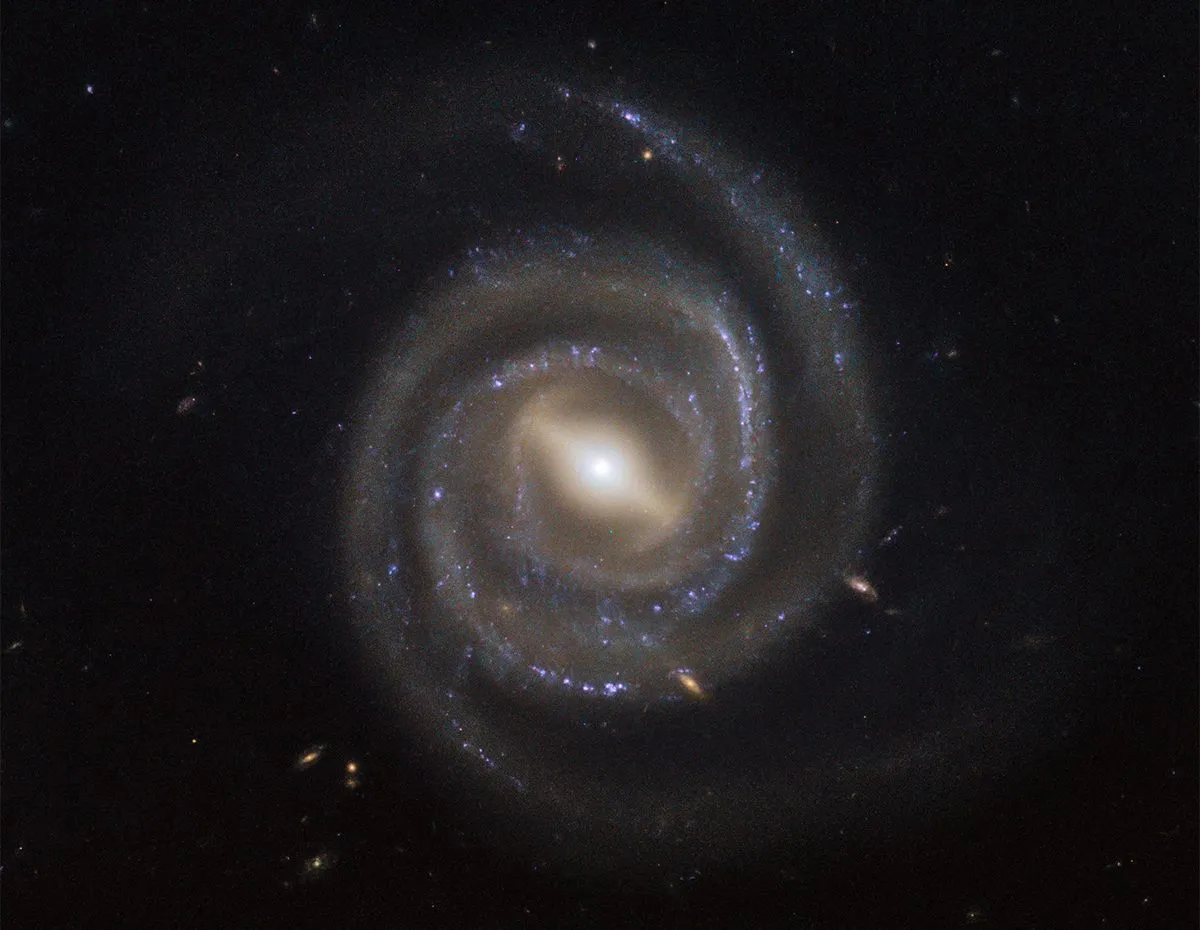Our Milky Way galaxy has had a close scrape with a neighbouring galaxy, and the Hubble Space Telescope has given astronomers a clear view of the aftermath.
The galaxy in question is the Large Magellanic Cloud, a small satellite galaxy of our much larger galactic home, the Milky Way.
Astronomers say the Large Magellanic Cloud has had a collision with the Milky Way, scraping by our Galaxy and in the process losing a lot of its surrounding halo of gas.

Understanding the Large Magellanic Cloud collision
How were astronomers able to deduce that the Large Magellanic Cloud collided with the Milky Way?
A team of researchers used data from the Hubble Space Telescope to observe that the satellite galaxy has a surprisingly small halo of gas surrounding it.
To put it into perspective, the Large Magellanic Cloud's halo is only 50,000 lightyears across. That's about 10 times smaller than the halos of similar-sized galaxies.
And yet, it has retained enough of its gas to keep forming new stars.

The compactness of its halo is evidence of a collision with our Milky Way, and adds fuel to the theory that the Large Magellanic Cloud isn't orbiting our Galaxy, but is instead making a close pass.
The study marks the first time astronomers have been able to measure the size of the Large Magellanic Cloud's halo, and Hubble has been key to making this possible.
"The Large Magellanic Cloud is a survivor," says Andrew Fox of AURA/STScI for the European Space Agency in Baltimore, principal investigator of the observations.
"Even though it’s lost a lot of its gas, it’s got enough left to keep forming new stars. So new star-forming regions can still be created.
"A smaller galaxy wouldn’t have lasted. There would be no gas left, just a collection of aging red stars."

Aftermath of the Large Magellanic Cloud collision
The Large Magellanic Cloud is one of the Milky Way galaxy’s nearest neighbours and is visible in the Southern Hemisphere sky, appearing 20 times as wide as the full Moon.
So what has been the effect of its brush with our own Galaxy?
"Because of the Milky Way’s own giant halo, the Large Magellanic Cloud’s gas is getting truncated, or quenched," says STScI’s Sapna Mishra, lead author of the paper.
"But even with this catastrophic interaction with the Milky Way, the Large Magellanic Cloud is able to retain 10% of its halo because of its high mass.”
In the close encounter, the dense Milky Way rammed into the Large Magellanic Cloud and stripped away a clump of its gas, which is seen trailing behind it.
"I like to think of the Milky Way as this giant hairdryer, and it’s blowing gas off the Large Magellanic Cloud as it comes into us," says Fox.
"The Milky Way is pushing back so forcefully that the ram pressure has stripped off most of the original mass of the Large Magellanic Cloud’s halo. There’s only a little bit left, and it’s this small, compact leftover that we’re seeing now."
Astronomers say the gas stripped from the Large Magellanic Cloud's halo will eventually slow down and 'rain' into the Milky Way.
But the worst of the close encounter now being over, the rest of its halo should survive intact, meaning the Large Magellanic Cloud will live to see another day.

What did Hubble see?
The research team analysed ultraviolet observations from the Mikulski Archive for Space Telescopes at STScI.
Hubble and other space telescopes have a unique ability to observe cosmic events beyond the blurring effect of Earth's atmosphere.
Astronomers say this study was only possible with Hubble, because it's the only space telescope able to detect the wavelengths of ultraviolet light required to observe the collision aftermath.
The team observed the halo gas by using light from the bright centres of distant galaxies, known as 'quasars'.
These phenomena are 'active galactic nuclei', powered by supermassive black holes emitting powerfully bright light at the centres of galaxies.

28 quasars in total were used to give astronomers a view of the halo gas, which absorbs certain colours of light.
An instrument called a 'spectrograph' breaks this light into its disparate wavelengths and can give astronomers information about an object's state, temperature, speed, quantity, distance and composition.
"This is a fantastic example of the cutting-edge science still being enabled by Hubble’s unique capabilities," says Professor Carole Mundell, Director of Science at the European Space Agency.
"This result gives us precious new insights into the complex history of the Milky Way and its nearby satellite galaxies."

